Well friends, today I am going to tell you about one of the most well-known traditions of my beloved Taranto and give you the foolproof recipe for real Tarantine pettole, no potatoes, no milk, just water, flour, and yeast, Pettole original Tarantine recipe by Grandma Rosa. Here on this blog, you’ll find many valid recipes related to pettole, even savory ones like these Savory Puglian Pettole traditional recipe but let me say that this one from my grandma really takes me back many years. Those from Taranto can understand me. Pettole are prepared on the day of Saint Cecilia, I, naturally, as a good food blogger, am giving you this recipe ahead of time so you can read and study it well. Yes, study it, because certain traditions are part of the cultural heritage of many cities and should never, ever be abandoned. They are passed down from mother to daughter, and it’s good to hold onto them. I’ll share my personal experiences regarding the day of Saint Cecilia when I was very young. A morning different from others, where you wake up, and in the silence of the early morning, you listen to the pastoral songs, but mostly you’re captivated by that smell. I remember my mother and grandmother waking up very early around 5 in the morning to prepare all the ingredients with love, and I especially remember the sound of these movements, like slapping the dough, which gradually took shape in their hands. Well, those slaps were the sweetest I had ever heard. I, hidden outside the kitchen, watched everything and admired them as they carefully and lovingly covered and cuddled that dough to let it rest cozily for many hours. The happiness in waiting to hear that noise and smell of frying, the good one, seeing these golden balls reappear in the oil, fulfilled the wait. It was 10 in the morning, and we were there as a family, happily waiting for these wonderful randomly shaped balls, yes, because they never came out perfectly round, very crispy outside and soft inside. Immediately passed from oil to granulated sugar. Here are the real Pettole tarantine.
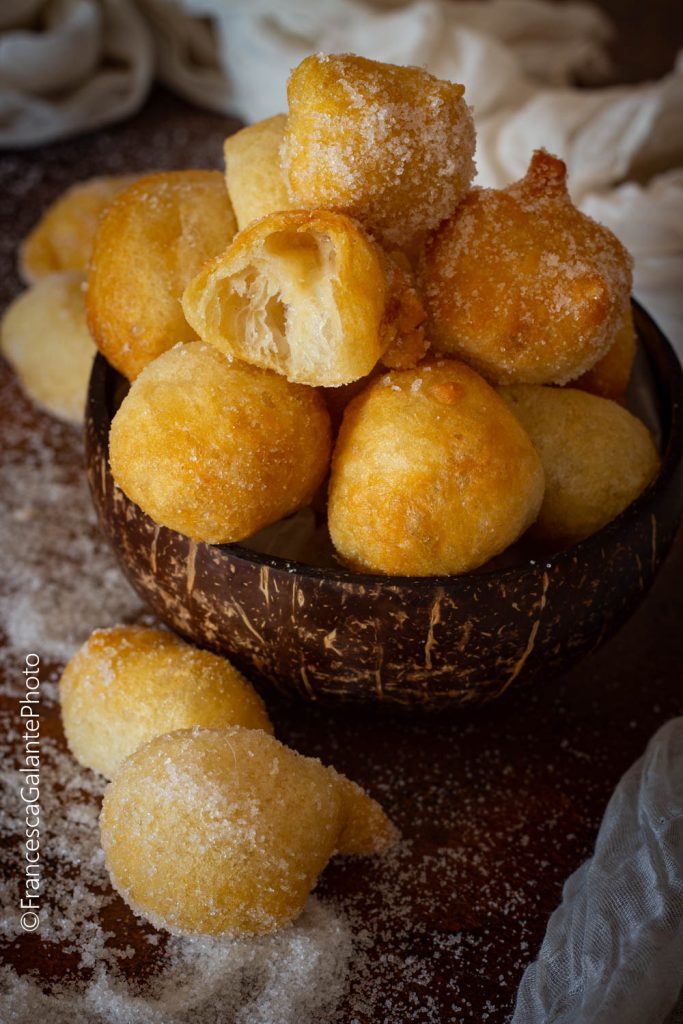
- Difficulty: Easy
- Cost: Very economical
- Rest time: 5 Hours
- Preparation time: 20 Minutes
- Portions: 20 pettole
- Cooking methods: Frying
- Cuisine: Italian
- Seasonality: Autumn, Winter
- Energy 525.84 (Kcal)
- Carbohydrates 18.43 (g) of which sugars 0.74 (g)
- Proteins 2.98 (g)
- Fat 50.20 (g) of which saturated 8.46 (g)of which unsaturated 39.12 (g)
- Fibers 0.67 (g)
- Sodium 98.81 (mg)
Indicative values for a portion of 30 g processed in an automated way starting from the nutritional information available on the CREA* and FoodData Central** databases. It is not food and / or nutritional advice.
* CREATES Food and Nutrition Research Center: https://www.crea.gov.it/alimenti-e-nutrizione https://www.alimentinutrizione.it ** U.S. Department of Agriculture, Agricultural Research Service. FoodData Central, 2019. https://fdc.nal.usda.gov
Ingredients
- 4 cups all-purpose flour
- 0.42 cup water (warm to dissolve the yeast)
- 1.69 cups water (at room temperature)
- 0.35 oz fresh yeast
- 1 teaspoon sugar (to activate the yeast)
- 1 teaspoon salt
- 1 quart peanut oil
- to taste granulated sugar (to dip the pettole in)
Tools
- Frying pans
- Containers
- 1 Spoon
Steps
Start by putting the flour in a tall bowl, so you can work the dough well. Make a hole in the center
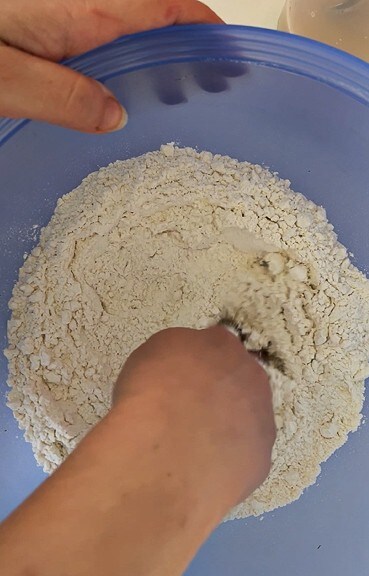
Pour in the 100 ml of warm water, where we have dissolved the yeast
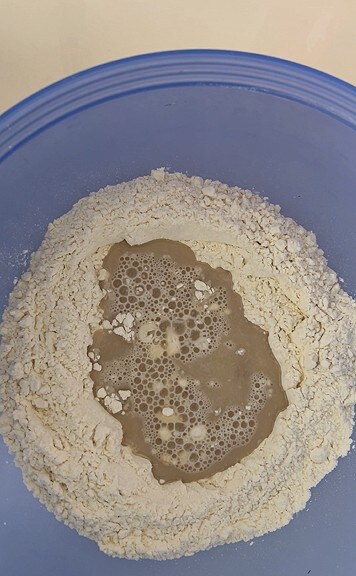
Pour in the teaspoon of sugar, it will help activate the yeast.
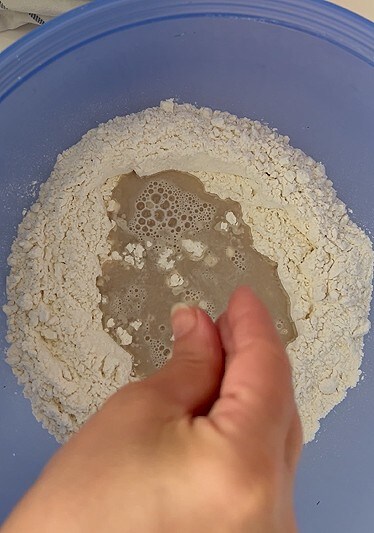
Start kneading strictly by hand.
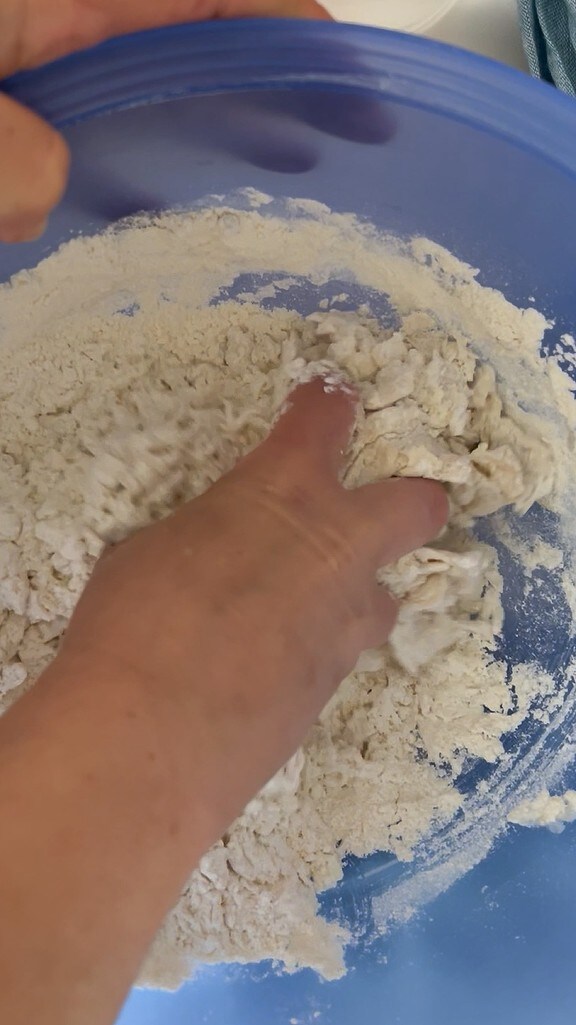
Little by little, continue kneading, add the 400 ml of water
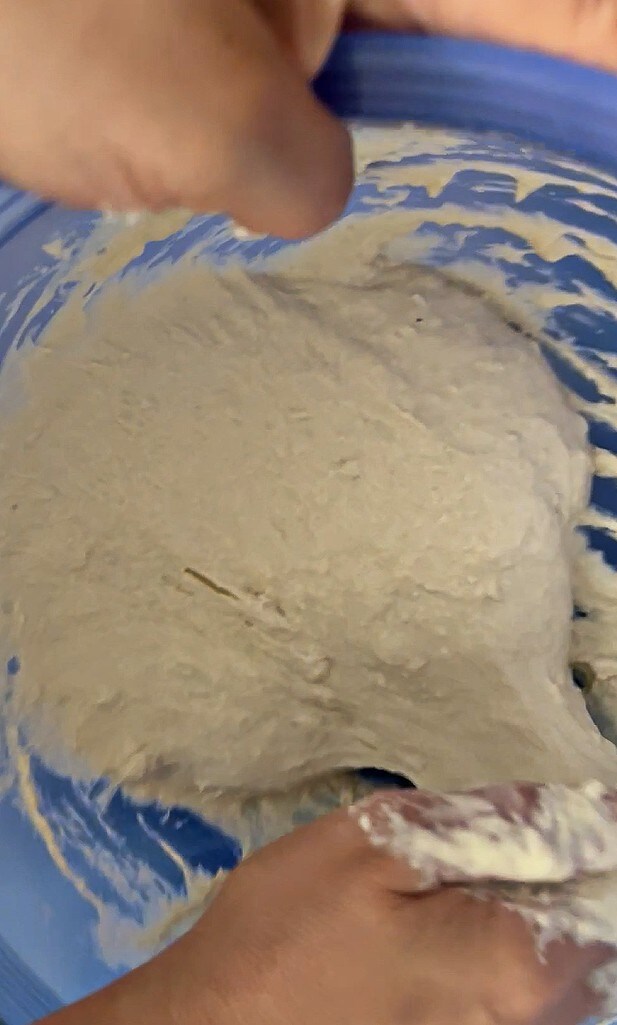
At this point add the salt and continue kneading
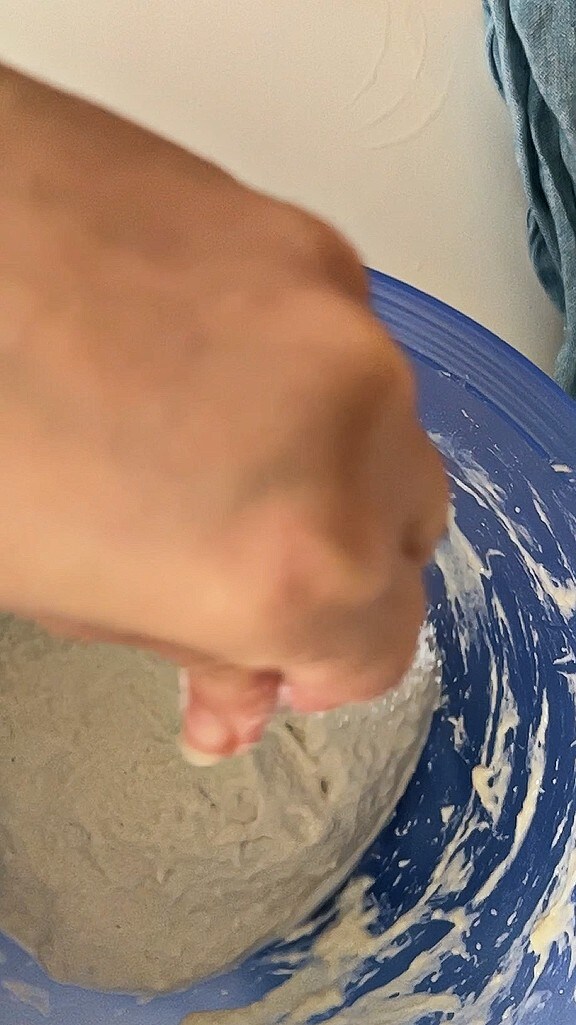
Vigorously slap the dough for about 10 minutes, with movements from bottom to top, until bubbles form. That’s the sign that the dough is ready to be put to rest
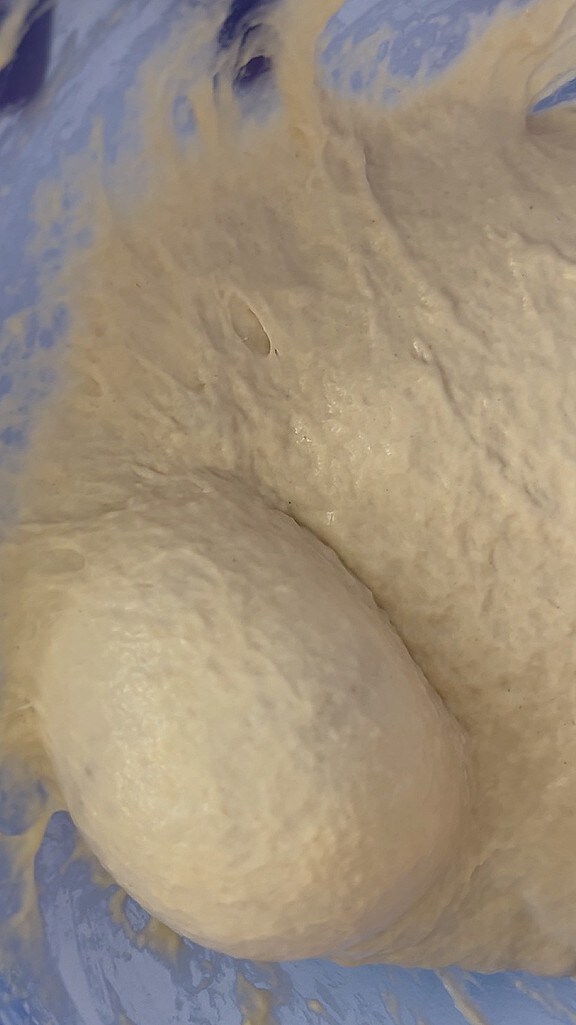
This is the consistency you need to achieve, like a batter
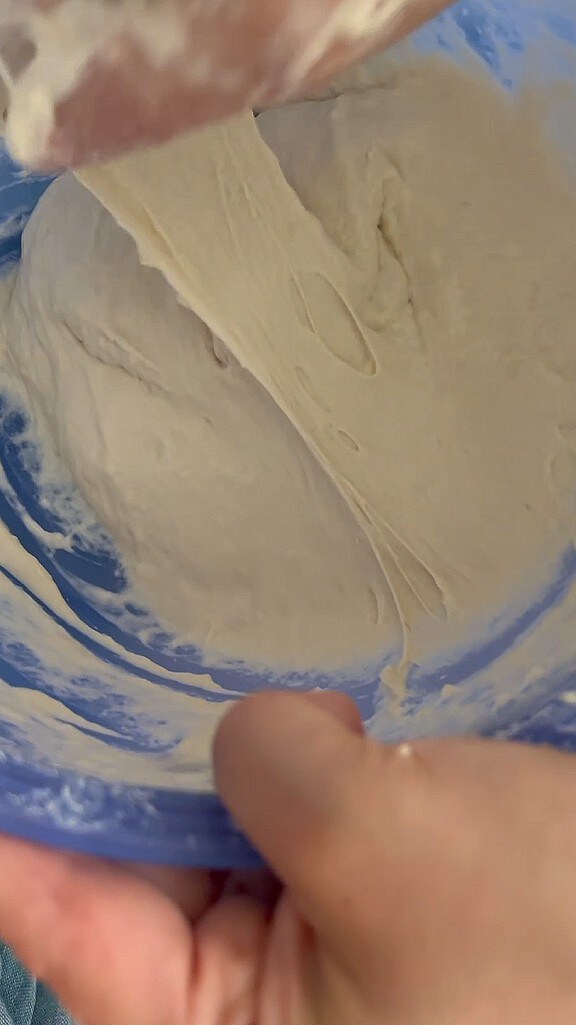
At this point, cover tightly with a lid, my grandma and mom would add a little blanket too, and let the dough rise and rest for at least 5 hours. Sometimes my grandma prepared it late at night using a few grams less yeast and fried it in the morning.
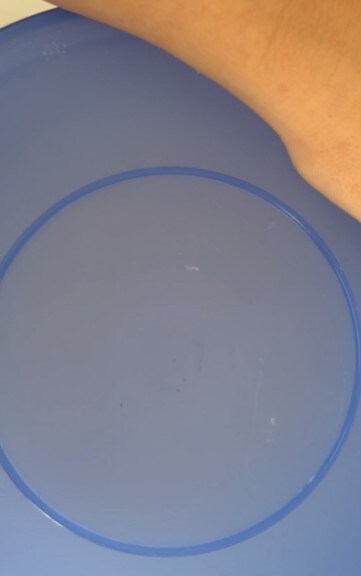
This is the perfect bubbly consistency of the dough before frying.
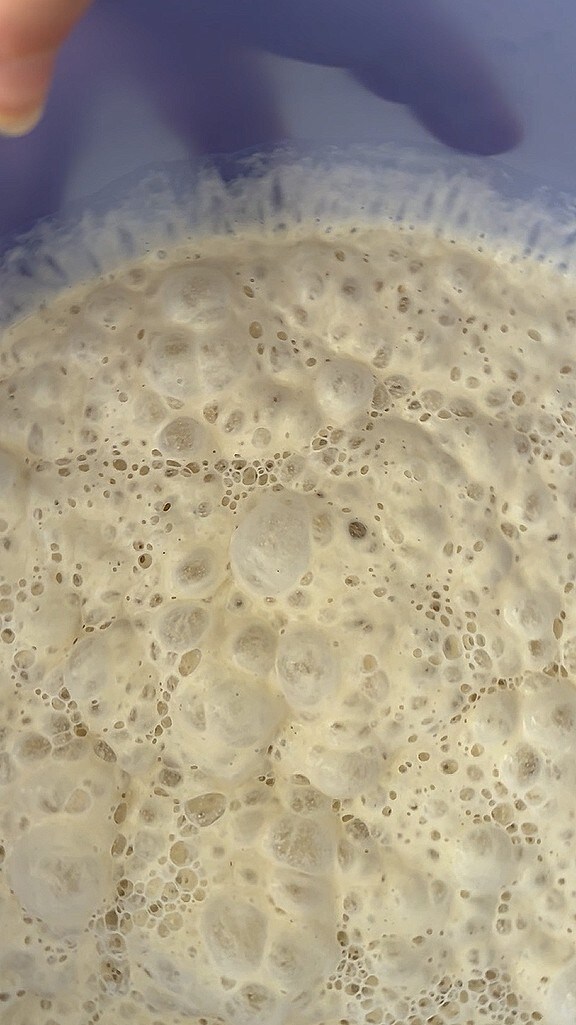
Slightly wet the spoon with water, drain it well, and take a bit of dough. Let it slide into the boiling peanut oil
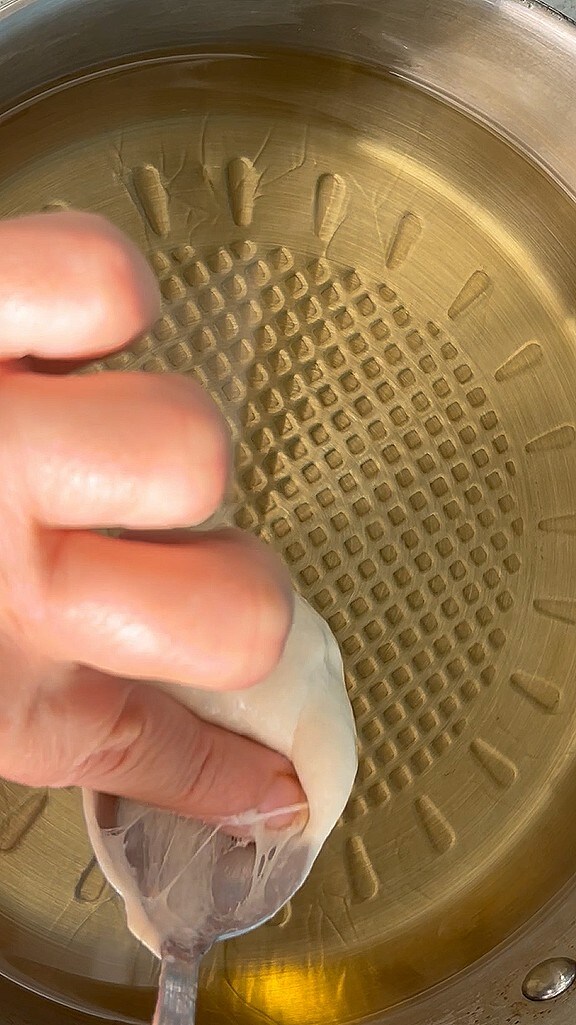
The pettole will start to puff up. Cook them well; they should turn golden
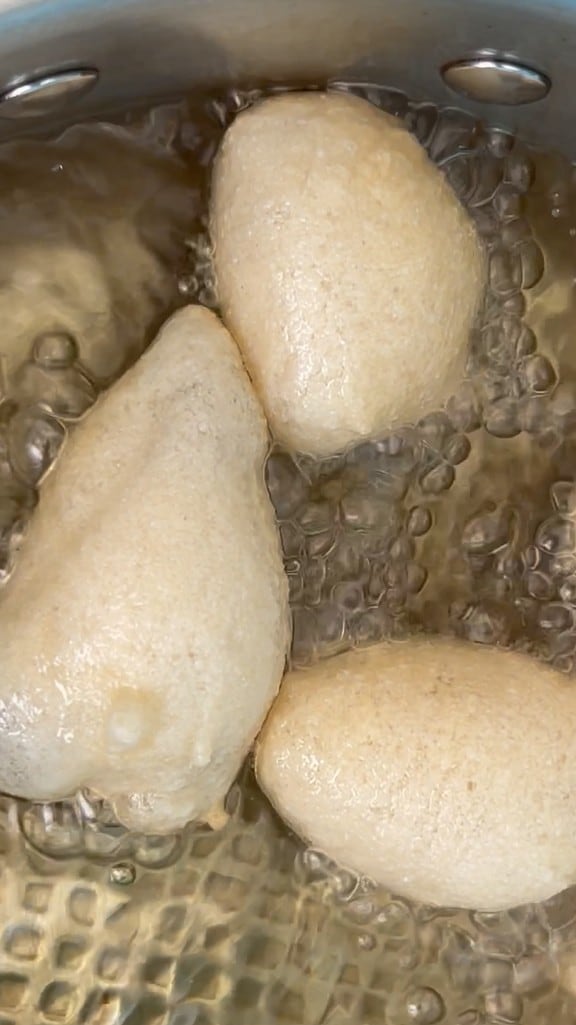
Being very light, the pettole do not flip easily, so use a ladle to pour oil over them to cook evenly
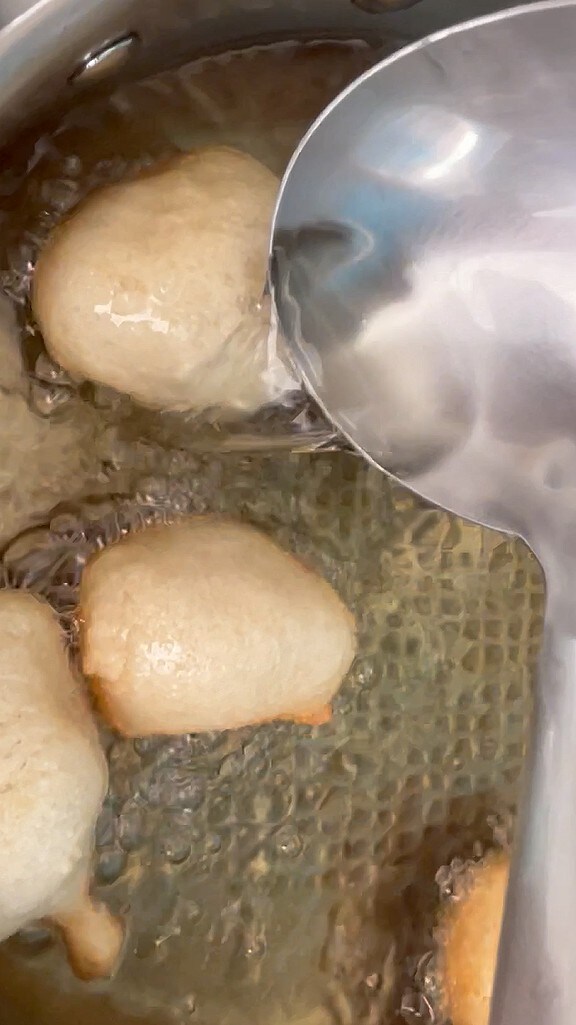
When the pettole are golden, drain them well and place them in a container with paper towels to remove excess oil.

This is the right consistency when you open the pettola.
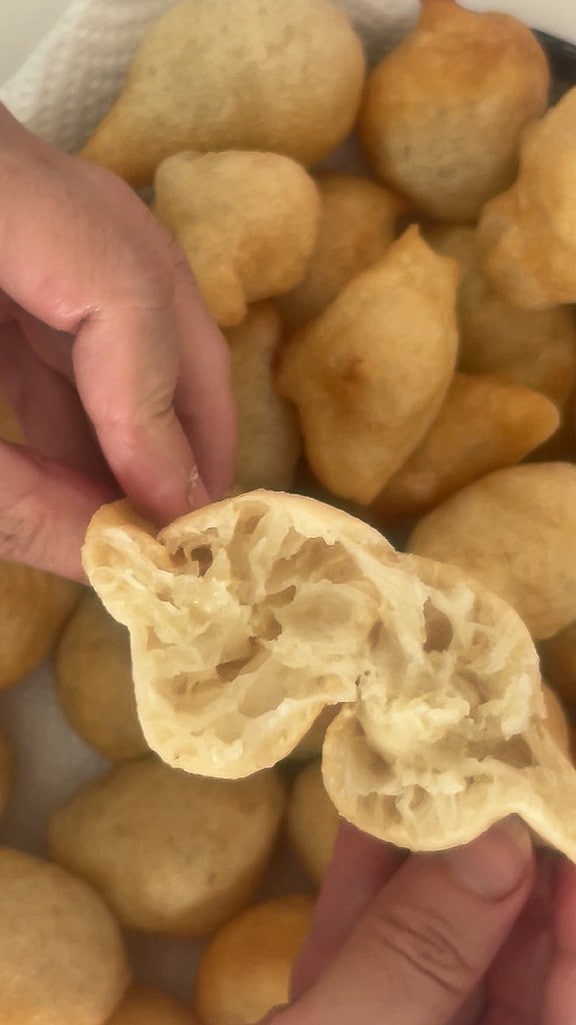
Immediately dip the pettole in sugar and eat them hot.
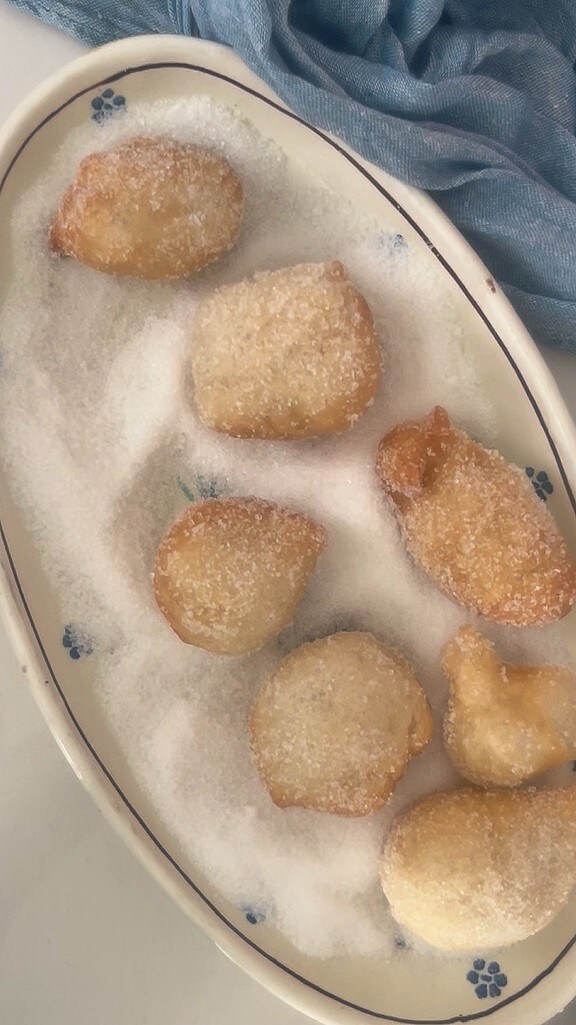
STORAGE
Actually, pettole should be fried and eaten to really enjoy them, but if you really have to store them, put them in a paper bag and consume them within 1 day.
FAQ (Frequently Asked Questions)
Why are they called pettole?
It’s said that the word derives from ancient Greek meaning “balls” or “cushions”, for the people, also known as “baby Jesus’ cushions”

